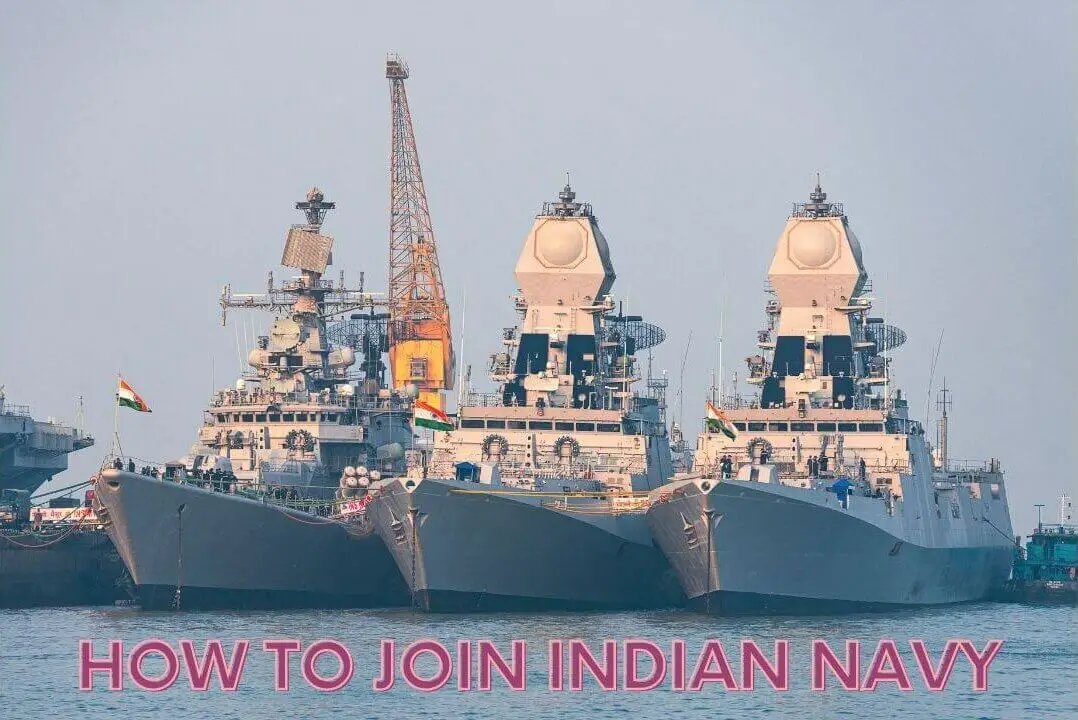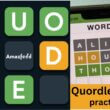Indian armed forces are the world’s second-largest military force with over 1.4 million active personnel. It is also the world’s largest volunteer army. A big force like this requires a big fat budget too. Indian defense force has the third-largest defense budget in the world. The 2020 GlobalFirePower says that it is the world’s fourth most powerful military. Talking about the Indian military force is a never-ending talk. They are serving this great nation for over 73 years now after independence in 1947. Even before that these military forces were there, the foundations laid by the British emperor and used in their benefits.
[adinserter block=”6″]
An Overview Of Indian Armed Forces
There are three professional uniformed services – the Indian Army, Indian Navy, and Indian Air Force. Adding more to the list the Indian navy is supported by Indian Coast Guard and paramilitary organizations. All the armed forces are under the ministry of defense of the Government of India. Before heading towards in-depth discussion few chief authorities we need to know are the supreme commander of all three military forces. The Indian President Ram Nath Kovind, minister of defense, is Rajnath Singh, the defense secretary is Ajay Kumar, IAS, and the chief staff of defense is General Bipin Rawat.
Indian armed forces take pride in their glory and strength. From the beginning, they have always been engaged in some big military operations comprising Indo-Pakistan wars of 1947, 1965, and 1971, the Indo-Portuguese war, the Sino-Indian war, the Chola incident of 1967, the Sino-Indian Skirmish war of 1987, the Kargil war, and the Siachen conflict among others.
Among the three major branches today we will get to know everything about the Indian Navy and how to join the Indian navy:
[adinserter block=”3″]
A brief history
The British first established the Royal Indian Marine in 1892 when everything in India was in control of the East India Company. Only after 1934, the royal Indian Marine turned into the Royal Indian navy. It fought both in World War I and World War II. At the beginning of world war two, the force in the Indian navy was only 114 officers and 1732 sailors.
After the partition and post-independence, the royal Indian navy was divided into two subparts Royal Indian Navy and Royal Pakistan Navy. After India became a republic on 26th January 1950 the prefix Royal got dropped and finally, it became the Indian Navy. The first Indian Naval officer who took over the position of Chief of the naval staff of the Indian navy was R D Katari. Indian navy replaced the crown from their crest with Ashoka Lion Motif for the Indian navy’s emblem. The motto of the Indian navy is “Sam no Varunah”, meaning: “be auspicious unto us ho Varuna.” Varuna is the god of seas as mentioned in the Vedas. Below the state emblem the phrase “Satyameva Jayate” glows in bold letters.
Current role
The naval branch of the Indian armed force’s primary agenda is to safeguard the maritime borders of the nation. They act to deter or defeat any aggression or threats against the Indian Territory. They interests, both in war and peace. Even they are engaged in many goodwill visits and humanitarian missions comprising disaster relief, promoting the bilateral relations between nations. The Indian Navy is a three-dimensional force with tremendous capabilities, balance, and cohesive force. It helps them to operate fearlessly above and under the surface of the ocean, always safeguarding the borders and upholding the national interest.
[adinserter block=”13″]
[adinserter block=”1″]
Currently, the Indian navy has 67,252 active and 55,000 reserve personnel in service as of June 2019. They have 300 ships, boats, and 300 aircraft.
The current principal roles of the Indian navy are:
- In conjunction with other Armed Forces of the union, act to deter or defeat any threats or aggression against the territory, people, or maritime interests of India, both in war and peace;
- Project influence in India’s maritime area of interest, to further the nation’s political, economic, and security objectives;
- In co-operation with the Indian Coast Guard, ensure good order and stability in India’s maritime zones of responsibility.
- Provide maritime assistance (including disaster relief) in India’s maritime neighborhood.
[adinserter block=”7″]
Rank structure
There are limitless opportunities for every youth of the nation to join the Indian navy in different categories, from sailor to officer. To make a navy career more unique is what our nation wants. Once you embark on one post there is only going up and no turning backs. And joining the Indian navy is just the first spet in that ladder of success. The navy offers a wholesome development to individual’s personalities, grooming them into becoming such fearless, well-mannered, and trained personnel. All of this becomes a great career ladder for them.
The Indian navy offers very fair opportunities for promotion, where your hard work and dedication is the only factor that matters. Sincerity, talent, and skills are always at priority here and they get their due recognition and rewards. The rank structure of officers and sailors in the navy is as follows:
Officer:
- Admiral of the Fleet
- Admiral
- Vice admiral
- Rear admiral
- Commodore
- Captain
- Commander
- Lieutenant commander
- Lieutenant
- Sub-lieutenant
- Midshipman
[adinserter block=”4″]
The sailors in the Indian navy initially appointed as seaman 2nd class are eligible for promotions. They grow through the rank and reach the highest rank of the enlisted personnel. Sailors with unique leadership qualities and who fulfill the requisite conditions in the aspect of age, education can aspire to become commissioned officers in the navy. The commission worthy scheme and special duties scheme are two schemes through which the sailors could have the opportunity to promote.
The best officers could rise to become the commander of ships and even the Admirals. That is the Navy’s way of giving opportunities to the deserving few candidates who for some reason could not make it to the officer rank. Every rank in the Indian navy has got its legacy, and they are very precious, and not to mention it is not very easy to get into the finest of the maritime army. So let’s have a look at the procedure of joining the Indian Navy.
How to join the Indian Navy?
[adinserter block=”5″]
Officer
The Indian Navy advertises the recruitment notice for the officer post in the employment news. Mostly it is there in every national and regional newspaper and all employment new paper. The permanent commission candidates go through a selection process conducted as NDA/NA cadet entry and CDSE (graduate) entry, which is a written examination conducted by UPSC. After the written test there is an interview of the shortlisted candidates conducted by the service selection board (SSB).
Other than this there are several ways to get into the Indian navy but none of those are written examination based. They select the candidates based on merit only and the criteria mentioned by the naval headquarters the applicants are shortlisted based on their compatibility with the required criteria. An overview of the details as follows:
Induction of officers in the various Branches of the Indian Navy is undertaken through one of the following modes/schemes:-
[adinserter block=”8″]
(A) UNION PUBLIC SERVICE COMMISSION (UPSC) ENTRIES
(i) Combined Defence Services Examination (CDSE)
(ii) National Defence Academy (Navy)
(iii) National Defence Academy (Naval Academy)
(iv) NCC
(B) DIRECT ENTRY: PERMANENT COMMISSION FOR UNDERGRADUATE LEVEL ENTRY
(i) 10+2(B.Tech)
(C) DIRECT ENTRY: PERMANENT COMMISSION FOR GRADUATE LEVEL ENTRIES
(i) Sports
(ii) Musician
(iii) Law
(D) INDIAN NAVY ENTRANCE TEST (INET): PERMANENT COMMISSION/ SHORT SERVICE COMMISSION FOR GRADUATE LEVEL ENTRIES
(i) Pilot (MR) – for men and women
(ii) Pilot (NMR) – for men only
(iii) Observer- for men and women
(iv) Air Traffic Contro (ATC) – for men and women
(v) General Service – Executive (GS/X)/
(vi) Hydro– for men only
(vii) General Service (Technical – Electrical & Engineering)
(viii) Naval Architect- for men and women
(ix) Information Technology– for men only
(x) Logistics- for men and women
(xi) Education- for men and women
(xii) Naval Armament Inspectorate Cadre (NAIC) – for men and women
[adinserter block=”9″]
[adinserter block=”13″]
National Defence Academy (Navy) & National Defence Academy (Naval Academy)
UPSC controlled the entry with IGQ MoD (Army)/ADG (Recruiting) as a nodal agency. The process comprises of a written examination followed by an interview conducted by the SSB. Then there is a medical test, conducted by the Indian Navy (naval candidates only). Finally, UPSC publishes the final merit list. The IHQ MoD (Army)/ADG (Recruiting) and IHQ MoD/DMPR issue the appointment letter of this process. The training of the selected personnel generally occurs during January or July every year. They publish the advertisement for entry every year in June or December.
Combined Defence Services Exam (CDSE)
This is also a process based on written examination. UPSC also conducts this exam. The general procedure is somewhat similar to the NDA examination. After the written examination there is an interview conducted by SSB and then a medical examination by the Indian Navy. Here the appointment letter is again from the IHQ MoD/DMPR. The training of officers selected through this channel is tentatively held in January or July and they publish the advertisement during November or July.
NCC Entry
Along with the CDS advertisement, there is another advertisement that comes regarding the joining in Indian navy for – Naval Wing Senior Div NCC ‘C’, for the candidates holding the certificates of B.E/B.Tech degree. There is no written test at this level of entry. The aspirants only have to forward their applications directly to the IHQ MoD (N)/DMPR through DGNCC. Then the candidates are directly shortlisted for the SSB interview. After that, qualified candidates have to undergo a medical examination. They publish a list of selected candidates based on their merits, and the training usually commences during January or July every year.
[adinserter block=”10″]
Direct Entry: Permanent Commission For Undergraduate Level Entry: 10+2(B.Tech)
12th pass students with 70% in physics chemistry mathematics and 50% in English in 12th or 10th standard can apply for Indian navy officer’s entry viz 10+2(B.Tech) entry. There are two terms in this entry spring term and autumn term that happens twice a year. NHQ papers and publishes the advertisement in Employment News, Newspapers for inviting applications 6-8 months before the commencement of the course. Post applications receiving, shortlisted candidates have to go through SSB interview based on JEE (Main) – All India Rank (AIR) for BE/B Tech curriculum. The validity of the JEE (Main) rank for applying for this procedure is one year from the date of declaration of the JEE (Main) ranks by CBSE/NTA. On completion of all SSBs, they publish the merit list in respect of all SSB qualified candidates and thereafter they appoint the candidates in order of merit based on no. of vacancies.
Direct Entry: Permanent Commission For Graduate Level Entries
IHQ-MoD(Navy)/DMPR controls the direct entries are and this caters to both Permanent Commission(PC) and Short Service Commission. In the leading newspapers and Employment News, these advertisements are posted, calling for applications from eligible unmarried candidates for such entries based on the availability of vacancies. Post applications receiving, the preliminary scanning of candidates occurs at IHQ-MoD(Navy), a test for their professional ability in respect of Musician and Sports entries. Successfully selected candidates are thereafter notified for SSB interviews at Bangalore, Bhopal, Coimbatore, Vizag, Kolkata. Thereafter the SSB qualified candidates have to undergo a medical examination and then inducted in the Indian Navy based on All India Merit, only if found fit. The training of these entries normally commences in January and July.
INDIAN NAVY ENTRANCE TEST (INET)
Indian Navy Entrance Test (INET) is the officers’ entry under the control of IHQ MoD (Navy)/ DMPR and caters for both Permanent Commission (PC) and Short Service Commission (SSC). The INET will be conducted twice a year. The selection procedure is the same as the previous portals. Minimum 40% marks in the INET test, followed by SSB interview, and medical test. Then the list for selected candidates is published based on the merit, all India bases.
Sailors
The selection procedure for the sailor’s entry as – AA/SSR/MR (Chef, Steward, and Sanitary Hygienist) is very simple. The navy headquarters publish the advertisement for the recruitment of Senior Secondary Recruit (SSR), Matric Recruit (MR), Musician (MUS), Sports Entry, and Artificer Apprentices (AA). The application form is accessible on the official website of the Indian navy. The candidate has to fill up the form very carefully and furnish all the required documents. There are 31 examinations centers all across the country the aspirant can choose any one among all of them. After the examination, there will be a physical test and a medical examination. After that, the final merit list is published and credible candidates get their call letters to join the force.
Conclusion
Joining the Indian Navy is not only about qualification, degree, or merit but it is a result of hard work of a fully dedicated mind. A mind that is not only intelligent but also strong that is capable of handling any situation. Staying away from their homes and loved ones for such a long period is not easy, and not a calk walk. To find your happiness and celebrate the festivals among your colleagues require immense dedication towards the nation.
[adinserter block=”11″]
[adinserter block=”12″]
[adinserter block=”13″]












